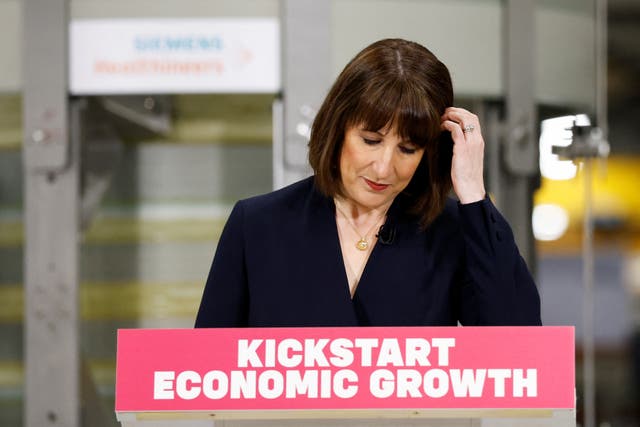Bank of England cuts rates but slashes growth forecast in blow to Labour
The base rate fell to 4.5% on Thursday, but the Bank halved the UK’s economic growth forecast for this year while predicting surging inflation.

The Bank of England has cut interest rates to 4.5%, but painted a gloomy picture for the UK economy by halving its growth forecast for this year and predicting a surge in inflation.
Policymakers voted for a quarter-point reduction on Thursday, after similar cuts in August and November last year, bringing the base interest rate to its lowest level in more than 18 months.
The base rate helps dictate how expensive it is to take out a mortgage or a loan, while it also influences the interest rates offered by banks on savings accounts.
Prime Minister Sir Keir Starmer said the move would give people “more money in their pockets”.
However, the Bank also warned that more people will be out of work, as firms swallow higher taxes and wage increases announced at the October Budget.
And it piled more pressure on Labour by forecasting a steep drop in economic growth this year and saying interest rates would rise by more than expected.
The UK economy is only set to grow 0.75% this year, down from a previous estimate of 1.5%, before accelerating again in 2026 and 2027.
Chancellor Rachel Reeves said she is “not satisfied” with the growth rate, after the Government made growing the economy its top priority last year.
To compound the issue, inflation is rising faster than expected, now set to hit a peak of 3.7% in late summer, before gradually starting to fall again.

The jump in inflation, which measures the rate of price rises across the economy, is mainly down to higher-than-expected energy prices, as well as rising water bills and bus fares.
Inflation is set to only fall back to the Bank’s 2% target in the final quarter of 2027, it said, about six months later than previously thought.
And policymakers also raised their forecast for unemployment, which is now set to rise to a peak of 4.75%, up from previous forecasts of 4.5%.
They said Labour’s October Budget policy or raising national insurance contributions (NICs) for employers posed “a risk” of more people being out of work.
Several large firms including Sainsbury’s have already cut staff numbers in the first weeks of 2025, with some of the supermarket’s job losses understood to be linked to the increase in NICs.
The pound plunged 1.1% against the dollar on the rates announcement, before partially recovering to 0.7% down later in the afternoon, at 1.242.

One positive from Thursday’s announcement, however, is that mortgage rates will fall after the rate cut, with households on tracker and variable deals set to see lower monthly payments as a result.
Governor Andrew Bailey said the cut will be “welcome news to many” but that the Bank is “monitoring the UK economy and global developments very closely, and taking a gradual and careful approach to reducing rates further”.
Meanwhile, despite the cut to near-term growth forecasts, the Bank said the economy would grow faster than expected in the longer term, with a growth rate of 1.5% for 2026 and 2027, both up 0.25 percentage points compared with the last forecast.
The Bank said it had not factored the potential effects of Donald Trump’s trade tariffs on its forecasts, adding that it “remains unclear what the overall landscape for US and other global tariffs will ultimately look like”.
The quarter point rate cut was not a unanimous decision, with two members of the Monetary Policy Committee – Swati Dhingra and Catherine Mann – voting for an even sharper reduction to 4.25%.
The FTSE 100 surged following the announcement, and was about 1.4% up on Thursday afternoon.





